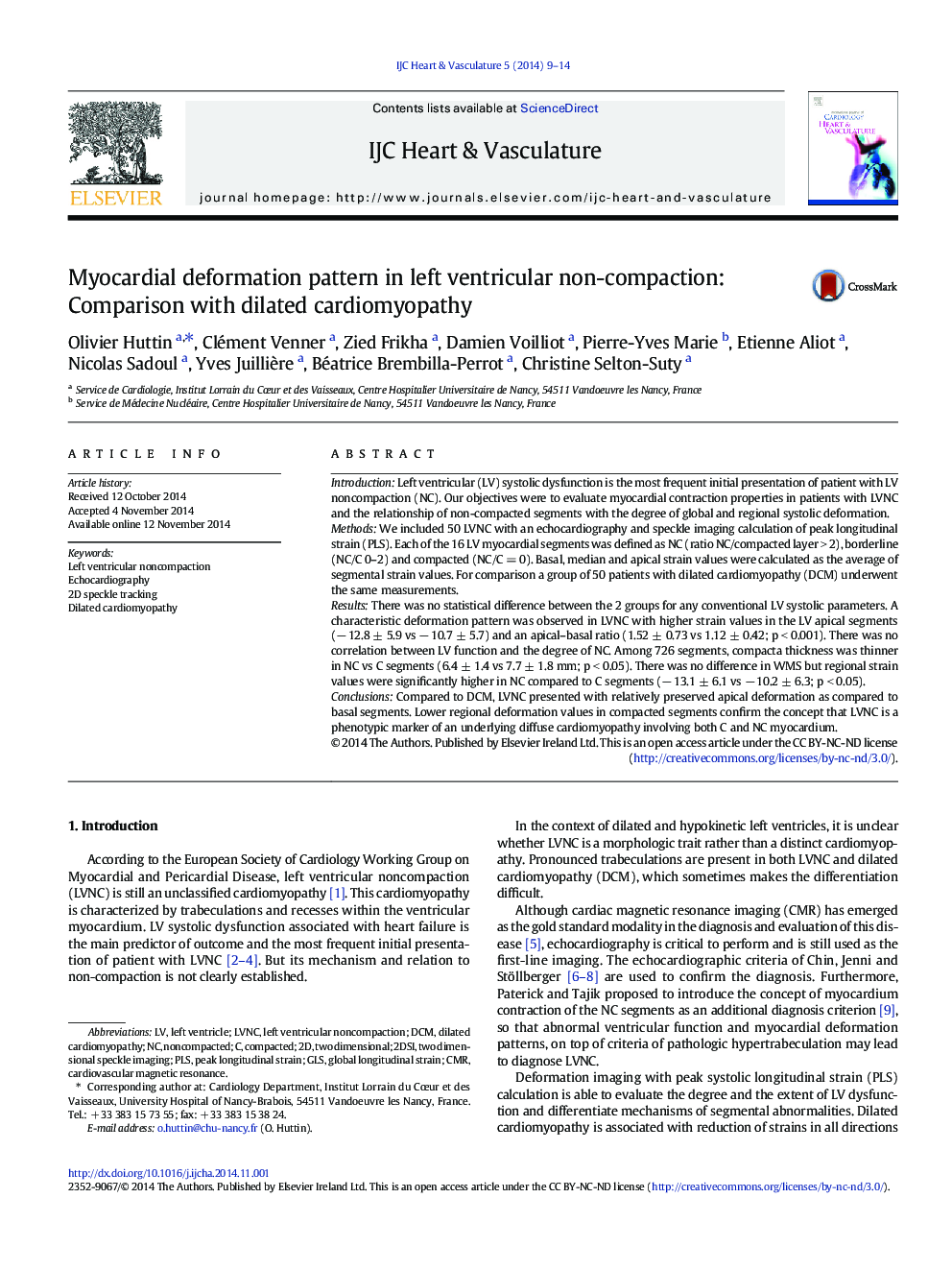| کد مقاله | کد نشریه | سال انتشار | مقاله انگلیسی | نسخه تمام متن |
|---|---|---|---|---|
| 2927071 | 1575816 | 2014 | 6 صفحه PDF | دانلود رایگان |
• We observed a base–apex gradient with relatively preserved deformation values in the apical region in LVNC.
• We find lower regional deformation values in compacted segments.
• We illustrate the role of deformation echocardiography to evaluate the degree and extent of LV segmental dysfunction.
• We define a new tool to help classification of patient with similar dilated cardiomyopathy phenotype.
• We confirmed the concept that LVNC is a phenotypic marker of an underlying diffuse cardiomyopathy.
IntroductionLeft ventricular (LV) systolic dysfunction is the most frequent initial presentation of patient with LV noncompaction (NC). Our objectives were to evaluate myocardial contraction properties in patients with LVNC and the relationship of non-compacted segments with the degree of global and regional systolic deformation.MethodsWe included 50 LVNC with an echocardiography and speckle imaging calculation of peak longitudinal strain (PLS). Each of the 16 LV myocardial segments was defined as NC (ratio NC/compacted layer > 2), borderline (NC/C 0–2) and compacted (NC/C = 0). Basal, median and apical strain values were calculated as the average of segmental strain values. For comparison a group of 50 patients with dilated cardiomyopathy (DCM) underwent the same measurements.ResultsThere was no statistical difference between the 2 groups for any conventional LV systolic parameters. A characteristic deformation pattern was observed in LVNC with higher strain values in the LV apical segments (− 12.8 ± 5.9 vs − 10.7 ± 5.7) and an apical–basal ratio (1.52 ± 0.73 vs 1.12 ± 0.42; p < 0.001). There was no correlation between LV function and the degree of NC. Among 726 segments, compacta thickness was thinner in NC vs C segments (6.4 ± 1.4 vs 7.7 ± 1.8 mm; p < 0.05). There was no difference in WMS but regional strain values were significantly higher in NC compared to C segments (− 13.1 ± 6.1 vs − 10.2 ± 6.3; p < 0.05).ConclusionsCompared to DCM, LVNC presented with relatively preserved apical deformation as compared to basal segments. Lower regional deformation values in compacted segments confirm the concept that LVNC is a phenotypic marker of an underlying diffuse cardiomyopathy involving both C and NC myocardium.
Journal: IJC Heart & Vasculature - Volume 5, December 2014, Pages 9–14
